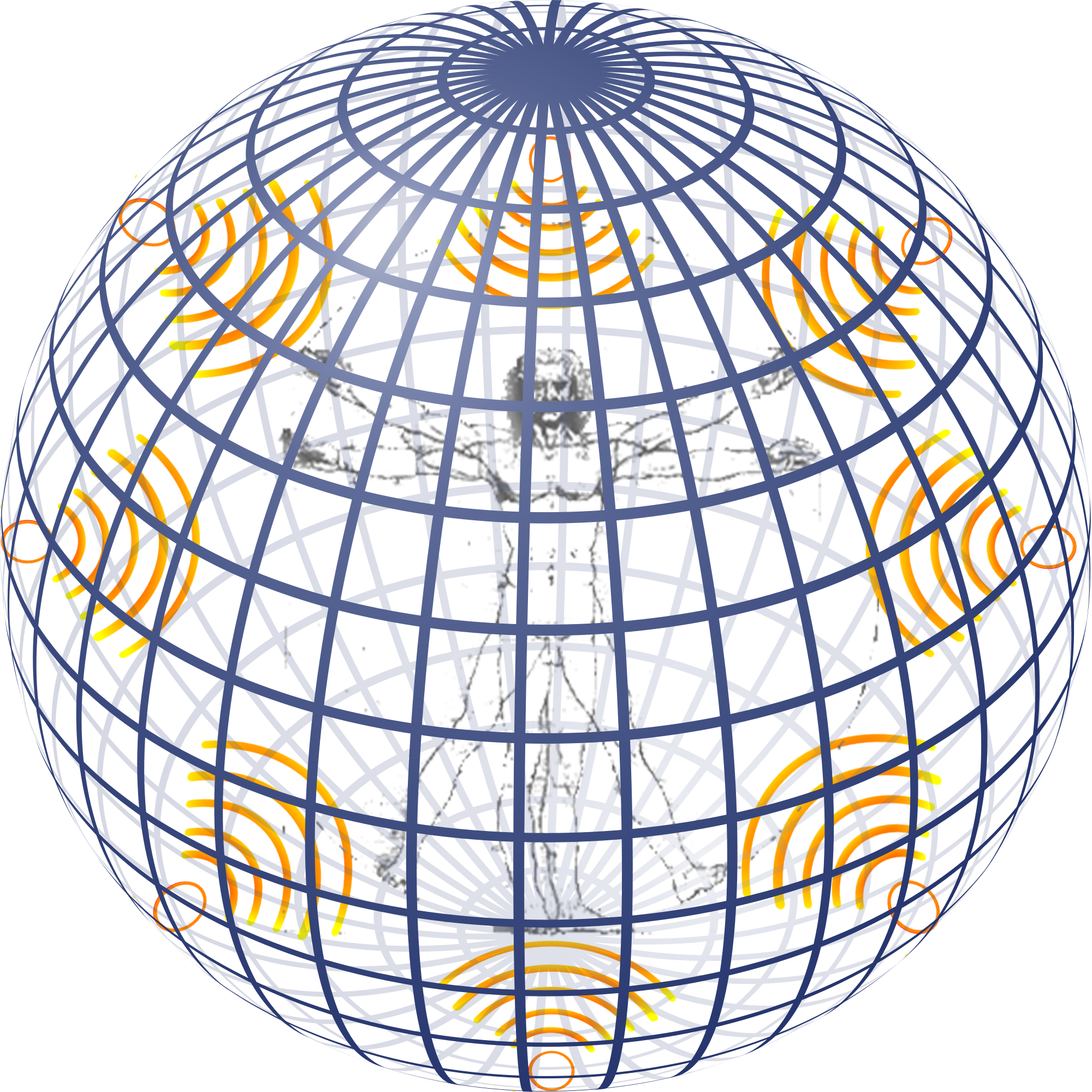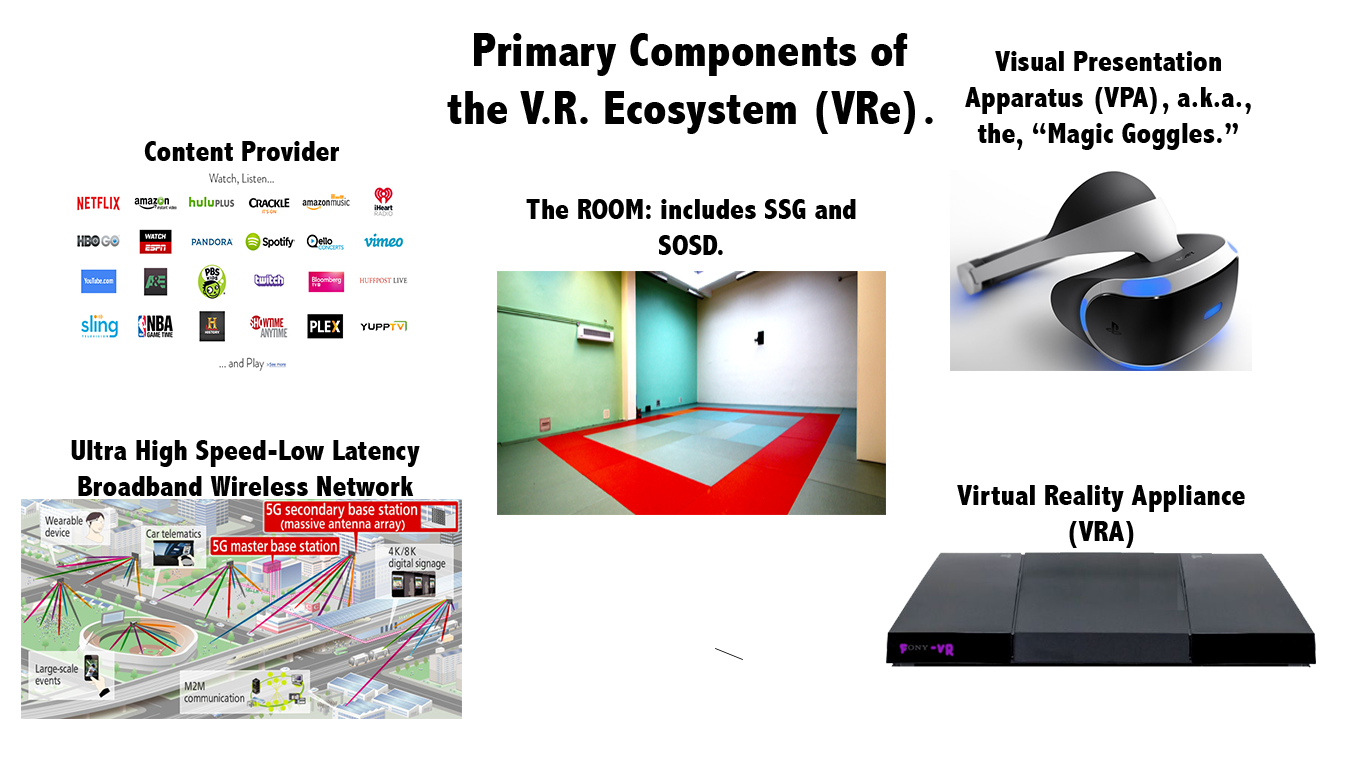The end of Dolby SR, and the birth of the Sonic Sphere Generator (SSG).
The origins of Dolby Studios, and their seminal Surround Sound (SR) technologies, are part and parcel of the history of the late-modern, cultural world. They have influenced all professional sound production in that they set a very high standard for fidelity, and thus, have occupied the auditory mindspace of entertainment for decades. But there is one thing they have lacked, even in their most dynamic forms, they have never had true 360-degree composition at the home. The closest the technology has come is via phonic devices like headphones, that envelop the ear and inundate it with, what I call, “un-nuanced sound (see Figure 5).”

By “un-nuanced” I mean to draw attention, only, to a speaker’s inability to recreate all of the subtleties of sound that the ear is capable of recognizing and appreciating. Speakers dictate the soundscape while in real life it is a more symbiotic relationship, and often, complimentary. To recreate a complete audio experience would, therefore, require a change in the Surround Sound paradigm, more accurately, a re-engineering of its ability to replicate a 360 degree, sonic environment that is compulsive in its sensitivity to real sound generation.[4]
Unfortunately, SR is founded on its limitation: the speaker. By this, I mean, it began and lived most of its life as a forward-facing auditory experience. It dictated the level and quality of sound more like a hammer, (a hammer that was always punching your face and, later, the back and sides of your head), than a song bird, which gently interacts with your perception to create the auditory subtlety which exists in our daily, hourly, and immediate experience.

This is not to suggest the very capable scientists, engineers, and employees of Dolby Inc. are not devising the most revolutionary VR experience they can think up. It is only a reminder that the way of presenting sound in the current HEe, must be re-composed to satisfy the requirements of the ‘VR era to come,’ and not the other way around. (see Figure 6).
In this way, the SSG should be a natural development of the former SR technologies but in terms of renewal, not, reform. In leaning too heavily on the understandings derived from the former HEe, they could, potentially, limit their design possibilities. If, ever, there was an out-of-the-box moment in the history of postmodern technology, it’s VR. [5]
Of course the SOSD and SSG are only two, albeit critical, pieces of the VRe, as is the ROOM, or any other spatial considerations. An, equally, vital component is the external network, or, what I would call the “backbone” of the VRe. In our diagram, I have termed it the Ultra High-speed, Low-latency, Broadband Wireless Network, or, UHSLLBWN (see Figure 7).[6] In next month’s post, I will consider this in detail, and how smartphone technology can play a vital role.

Until then, know this, the BOOM hates you on the Battlefield because you are miserable blueberries, but he loves you in the digital SSG we call “boomsalad.” Until, next month.
– BOOM
[1] The HE ecosystem (HEe) that we enjoy in the West is largely a derivative of the radio-centric version that it, ultimately, amended, but did not eradicate, in terms of its fundamental, forward facing , wall dependent features.
[2] As with State, Federal, and moral law, there are some ethical issues of VR that need to be considered especially as to how it will affect human life.
[3] Artificial Intelligence (AI) is a technology that is still early in its evolution, but will be essential to the SOSD functioning properly, and VR as a whole.
[4] Once again, I believe that AI will have a significant role to play in assessing and reproducing real nuance in a virtual environment, a.k.a., the VRe.
[5] Imagine if VR were approved for medical surgical use. It would mean that doctors could assist operations safely, for patients anywhere, at any time. A 24-hour network of surgeons ready to save lives remotely, using VR.
[6] This is possibly the worst acronym in history. I welcome any suggestions.